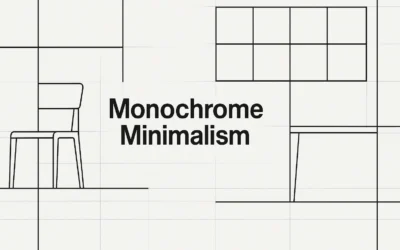 Aarron Walter. is the author of Building Findable Websites: Web Standards, SEO, and Beyond (New Riders, 2008) and the lead user experience designer for MailChimp. For more than a decade Aarron has been busy building websites for his clients, and teaching interactive design courses at colleges and universities in the US.
Aarron Walter. is the author of Building Findable Websites: Web Standards, SEO, and Beyond (New Riders, 2008) and the lead user experience designer for MailChimp. For more than a decade Aarron has been busy building websites for his clients, and teaching interactive design courses at colleges and universities in the US.
As a member of The Web Standards Project Aarron is the lead of The WaSP InterAct curriculum project.
How or where do you find inspiration?
When I’m zooming through the Web I tend to capture screenshots of little bits of design that I appeal to me or that I feel solve a problem well. I use LittleSnapper to keep it all organized recall things quickly. I find that if I don’t archive an idea right away I’ll never get it back. Keeping a visual library of inspiration is an effective way to keep your designs fresh.
I get a lot of inspiration from art and design history. I studied painting in undergrad and grad school, so I have a good reference for art history, which often informs formal design decisions about composition, color, etc. You can’t go wrong trolling the Meggs History of Graphic Design. I strongly believe that it is dangerous to get too much inspiration from your own medium as it often leads you imitate rather than innovate.
I travel a good bit and end up photographing a lot of street art and architecture. Though I don’t know that is has a direct, visible influence upon my design aesthetic, I do think it subconsciously teaches me how to think creatively.
Who is the biggest influence on your work right now?
I am most influenced by the people who use the interfaces I design. I spend my days designing the interface and the workflow of MailChimp, which is a web app. Web apps have to solve problems for people, they need to be intuitive, and I believe they should also be human. I’m sort of turned off by the popular trend of cold web apps that all look the same. You know the ones – solid color header, squared off tabs, simple and functional but they’re about as human as a parking deck.
I love the interfaces of Mint.com, Virb.com, and Vimeo.com. They have personality, depth of space, and texture while remaining efficient and elegant. They feel like they were designed by people who don’t work in cubicles.
Just as the Arts and Crafts movement was a revolution against the industrial age and the machine, I think we are seeing a bit of that today as web applications shift from being purely function focused to a better balance of form and function that lets us feel more human as we are being productive.
With MailChimp we try to inject a lot of humor into the experience. We know that our users are often stressed when trying to get an email designed and sent under a deadline, so why not make them feel a little better by telling them a joke, complimenting them, or pointing them to a funny Flight of the Conchords video that gives them a much needed thirty second break from their work? That small bit of humor makes a task a treat.
Where are your “design roots”? Print or Web?
Neither. I am a painter by training. I really had to teach myself about print and web design after I finished college. I took a Photoshop class in grad school so I could learn to create quick mockups of ideas I had for paintings. I started to get really interested in the images I was making, and they sort of took on a life of their own. I wanted to take them further, so I took a class on Director in which I learned to make interactive CD-ROMs. That introduced me to coding, and actually got me a job at a small design agency in Philadelphia after school. I almost didn’t get hired because I went in with a suit and tie, and the place was so laid back with loud music, dogs, and beers in the fridge. When they saw my crazy CD-ROM work, which was painterly, political, and creative, they hired me on the spot. At this agency I learned a lot about HTML, CSS, and JavaScript, and started to understand that I knew very little about graphic design. I had to do a lot of independent learning to catch up on layout systems, typography, and the history of graphic design.
How important is it to know the history of design?
Essential! It’s hard to become a great designer without knowledge of the revolutions and innovations that shaped the current state of design. It’s much easier to develop your own visual grammar when you can build upon the successes of your predecessors.
This doesn’t require a formal design degree. I never studied design in school, but I was still able to fill gaps in my knowledge by plowing through a few books. I think it is essential that every designer today to at least have a solid understanding of the last century of graphic design.
Serif or Sans?
Yes. I like to keep my options open.
Do you code and design? Are you a “Hybrid”?
I would consider myself a hybrid. As a professor for ten years, I had to teach a broad range of design and coding classes, which afforded me the opportunity to learn a lot about all sides of our medium. I like straddling the divide. I think it makes me a better designer to know what I can and can’t do with code, and conversely I code better when I know what design treatments I’ll need to accommodate.
What’s your favorite part of the creative process?
I like finding the idea. Working fast through a lot of concepts is fun. Of course, I love getting to the end of a project and seeing my designs in front of users.
What makes your creative process different from everybody else?
I don’t know that it is. I try to get clear perspective on the goals of a design and the needs of users before getting too far into a project. I work on paper and OmniGraffle at first only because I can work through ideas quickly. I think it’s important to collect ideas indiscriminately early in the creative process then evaluate them later. If you try to evaluate while creating ideas, you end up with stale, predictable results.
When I was in high school I was in an improvisational acting group in which I learned to never say no when an idea is presented. If you say no, you kill the narrative flow. The creative process is similar. “No” is the cryptonite of creativity.
I often post my drawings in my workspace so I can live with them and find their flaws. This also affords colleagues the opportunity to provide feedback. I put a lot of post-it notes on my drawings indicating changes I need to make. Then I come back and refine them.
As an interface designer I rely a lot upon design patterns to construct interfaces that people will intuitively know how to use. When you have a visual grammar like this, you can assemble sophisticated ideas and interactions quickly.
What do you see as the single biggest shift in the evolution of design over the past 5 years?
Our very young medium only recently started to look to design history for cues on how to solve common design problems. When I got started in web design in the 1990s, there was a sense that this new medium didn’t need to look to the past for ideas because it was the embodiment of the future. Khoi Vinh and Mark Boulton have done the web design community a great service by raising awareness of classic grid systems and adapting those print design concepts to our medium. Typekit is a huge step forward for typography on the Web. We’re finally getting the tools and respect for the past that we need to push our medium forward.
What’s the difference between User Experience and User Interface design?
User Experience pulls together all aspects of user interaction in one grand strategy. It encompasses design, usability, copy writing, and more. User Interface Design is the discipline of creating usable interfaces for applications and websites. There is certainly overlap between the two. I see these two positions as the user science equivalent of a creative director and a designer.
What makes one a web design professional?
Beyond simply receiving a paycheck for the work you do, being a web professional means respecting your craft, constantly learning, and striving to give your clients and users the best product possible.
What are designers/developers doing right (or wrong) in the web 2.0 world?
Because our medium moves fast and constantly has new developments, we have an addiction to “new”. We are always chasing the next shiny object. This is why there is a proliferation of blog posts entitled “50 New CSS Tricks” and the like. Even the nebulous term “Web 2.0” is an illustration of this point. Though our medium has most certainly evolved in the past few years, its evolution doesn’t map to a software versioning system. It’s a marketing term driven by our obsession for new things.
Obsessing over new tools and techniques leads web designers to create sites that are a hodgepodge of tricks rather than a coherent design strategy. We need to focus more on our message and the experience we are trying to create for our audience.
What’s your favorite flavor of design or development programs/languages?
I care less about tools and more about results. On a daily basis I use HTML, CSS, JavaScript, PHP, pen, paper, Photoshop, OmniGraffle, LittleSnapper, TextMate, Tweet Deck, a plethora of browsers, and iTunes. I am happy to use any too that will get me the result I want.
What is your favorite book?
Anything by Malcolm Gladwell. I just read Outliers and it’s become the lens through which I see the world.
What is your favorite movie?
Empire Strikes Back, but Donnie Darko is also top on my list.
Who is your favorite musical artist (or What musical artist are you listening to the most right now?)
I have my core favorites that I listen to all the time like Radiohead, The Beatles and Wilco. Recently I’ve been listening to a lot of Gnarls Barkley, and Justice. I also have a decent collection of stuff ripped from 78s. I love listening to jazz and country from the 1920s and 30s when I am designing.





Great interview! I especially like the quote “Because our medium moves fast and constantly has new developments, we have an addiction to “new”. ” Thanks for posting this!
Great interview! Always a pleasant to read interviews of famous designers.